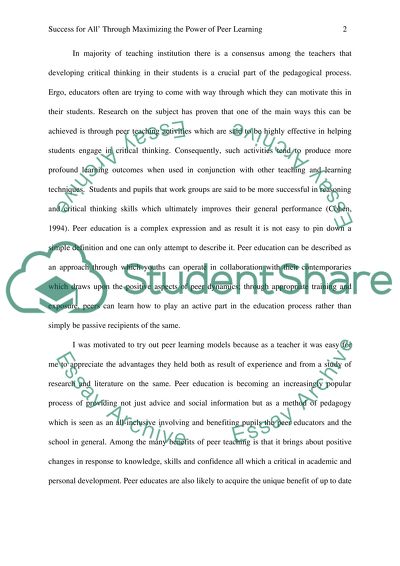Cite this document
(“Success For All Through Maximizing The Power of Peer Learning Essay”, n.d.)
Retrieved from https://studentshare.org/education/1638459-success-for-all-through-maximizing-the-power-of-peer-learning
Retrieved from https://studentshare.org/education/1638459-success-for-all-through-maximizing-the-power-of-peer-learning
(Success For All Through Maximizing The Power of Peer Learning Essay)
https://studentshare.org/education/1638459-success-for-all-through-maximizing-the-power-of-peer-learning.
https://studentshare.org/education/1638459-success-for-all-through-maximizing-the-power-of-peer-learning.
“Success For All Through Maximizing The Power of Peer Learning Essay”, n.d. https://studentshare.org/education/1638459-success-for-all-through-maximizing-the-power-of-peer-learning.


